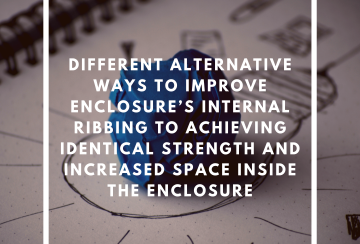Different Factors to Consider When Selecting the Best Outdoor Electronic Enclosures - HLSRN

Different Factors to Consider When Selecting the Best Outdoor Electronic Enclosures
- April 16, 2019
- Posted By Sheila Mendoza

The electronics devices being used in manufacturing or industrial companies that consists of outdoor components are generally made for outdoor use. The components that are made with these devices will be exposed to harmful electronics that its counterpart (indoor electronics) is not exposed to. In making a decision which enclosure should be purchased to protect these outdoor electronic devices that will be able to withstand the harsh or extreme outdoor elements is very important. Likewise, selecting the components or features the electronic enclosure will have is just as important.
One of the main challenges in utilizing an outdoor enclosure is knowing its capabilities and characteristics to be able to efficiently withstand the harmful elements it will exposed to in an outdoor environment. Being knowledgeable in different guidelines that are set by the National Electrical Manufacturers Association (NEMA) is extremely beneficial for engineers or companies making the decision which enclosure should be purchased to protect their equipment to be used for outdoor applications.
In determining which appropriate NEMA rating for an electronic enclosure is the first step in the decision making process. Knowing which NEMA rating can withstand harmful or harsh certain elements will keep the companies on track. For example, a NEMA 3 enclosure means that this electronic enclosure is designed for outdoor applications given that the environment presents a fair climate. Once the NEMA rating is increasing, the more durability it can offer as well as protection it can give to the electronic equipment. Another example would be a NEMA 4X or NEMA 6 rated enclosure gives holistic protection for equipment from water ingress or ice formation.
Making sure that the electronic enclosure companies use has NEMA rating will help manufacturing or industrial companies a lot. However, there will be times that a need will arise for a customized enclosure in order for the enclosure to give rightful protection for the equipment. For example, an electronic enclosure should have external accessories or features such as cable gland or antennae. This depends on the specific application it will be used for. Another example is the holes that are pierced through the electronic enclosure. The holes can enable the personnel using the enclosure to access some parts of the equipment however this can bring harm to the electronic device because water might seep through the enclosure.
With this in mind, the National Electrical Manufacturers Association also published standards for the holes or piercings that can be made on the enclosure. The rating is what we call IP or Ingress Protection rating. This will make the engineers and companies equipped with knowledge about the ingress protection an enclosure can give to the equipment. For example, if an enclosure has an ingress protection rating of IP66 or IP67 means that the holes on the enclosure will be able to withstand strong water pressure coming to the enclosure.
In conclusion, different companies can provide a wide variety of plastic electronic enclosures that are built for harmful, harsh, and extreme weather conditions. It is recommended for companies to communicate the needs for their enclosures to the manufacturing companies.